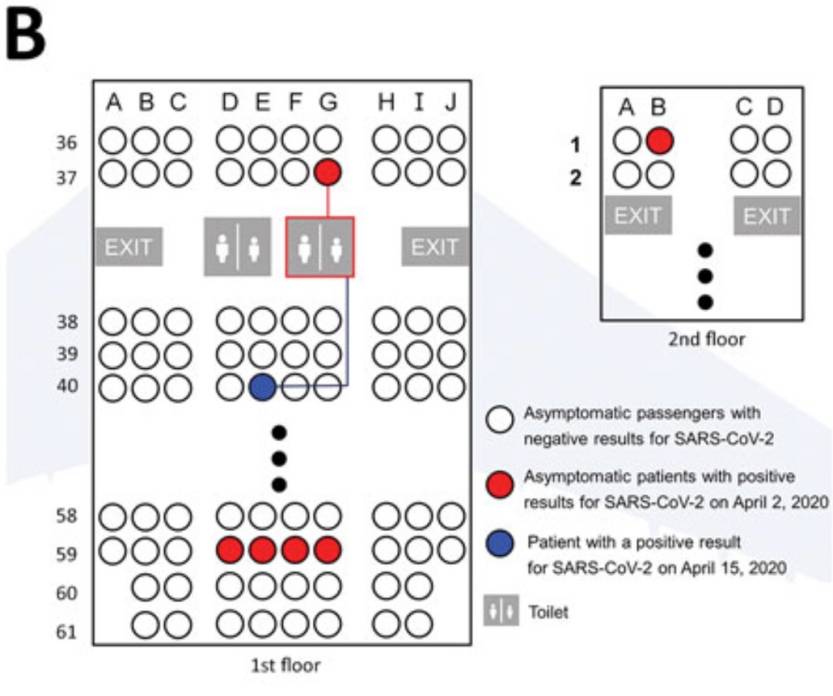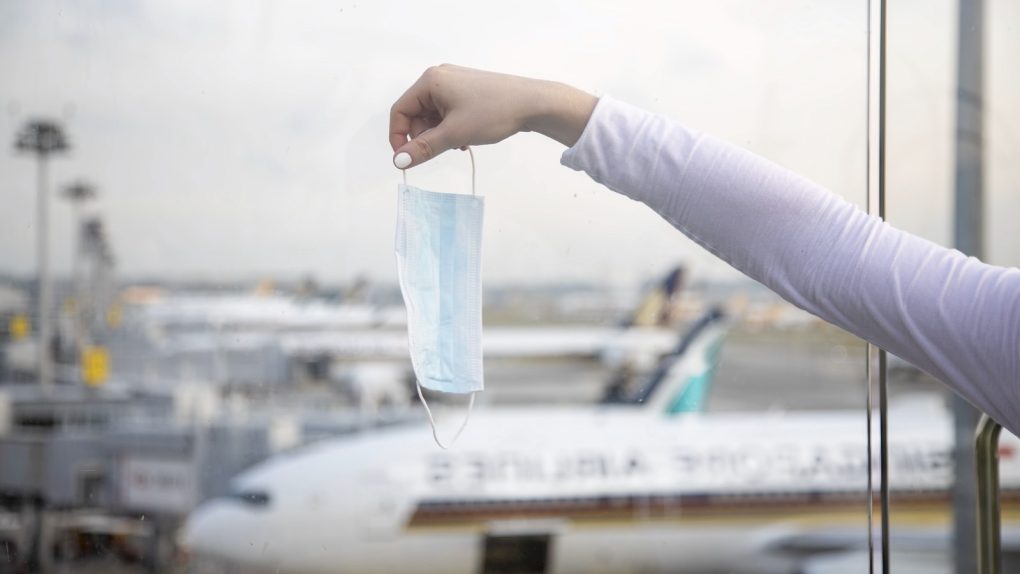- A study shows that coronavirus transmission from asymptomatic carriers is possible.
- COVID-19 can spread inside an airplane even when precautions are taken, and the study suggests that common spaces like toilets can spread the illness.
- Researchers who handled the safe evacuation of Korean citizens from Milan in late March were able to prove that asymptomatic COVID-19 transmission can happen during flights.
- The scientists controlled everything from start to finish, observing, testing, and quarantining everyone involved.
A single study from Korea delivers several important details about the novel coronavirus.
First of all, asymptomatic carriers can infect other people. More studies have shown in the past few months that asymptomatic carriers can develop a viral load similar to symptomatic patients and that their bodies do show signs consistent with the infection even if the patients themselves do not report any symptoms.
Secondly, COVID-19 infections on a plane are possible. Some studies looked at the matter in the past few weeks, suggesting that flying during the novel coronavirus pandemic might be safer than we first thought. Those studies did not eliminate the risk of spread aboard an airplane, but said the risk is very low if all health recommendations are followed.
Thirdly, the study seems to indicate that COVID-19 spread in bathrooms is a real risk aboard planes. Other studies had already raised the possibility of COVID-19 aerosol transmission in restrooms, and this one seems to confirm those findings. What makes this study more important is that all the people who traveled on the flight were observed closely before and after the plane took off.
The American Centers for Disease Control and Prevention (CDC) published a study from its Korean counterpart, which observed all the people involved in evacuation flights in late March from Italy to Korea, from passengers to the crew of the airplane to the CDC health officials who monitored the process.
The KCDC enrolled in its study 310 passengers who were booked on an evacuation flight from Milan, Italy to South Korea. The flight was conducted under strict infection control procedures that included screenings before the flight (examinations, interviews, and temperature checks), social distancing during boarding, and the use of N95 respirator during the flight.
The KCDC staff found 11 symptomatic patients before boarding had started, who had to stay behind. The 299 asymptomatic passengers continued their trip to Korea, where they were quarantined for two weeks at a governmental facility, where patients were completely isolated from each other. Medical staffers check them twice every day, taking temperatures and monitoring COVID-19 symptoms. PCR tests were performed on day 1 for all passengers, and day 14, at the end of quarantine.
Test results showed that six people were infected on day 1 with the novel coronavirus, and they were moved to the hospital. They showed no symptoms for the entire 14-day period they spent in quarantine.

A 28-year-old woman who had no underlying conditions tested positive on day 14 after returning from Italy. She started showing symptoms on day 8, including coughing, runny nose, and muscle pain.
All remaining 292 patients were released from quarantine on day 15. The 10 crew members and 8 KCDC medical staff were also quarantined, and they all tested negative on days 1 and 14.
The scientists believe the COVID-19 transmission could not have happened anywhere else but the plane. The 28-year-old woman was in isolation for three weeks before the flight, and she did not come in contact with others. She wore the N95 mask almost for the entire duration of the flight, except when she used the toilet. She was seated 3 rows away from asymptomatic patients who may have shared the same restroom during the flight:
Because KCDC performed strong infection control procedures during boarding; the medical staff and crew members were trained in infection control; all passengers, medical staff, and crew members were tested twice for SARS-CoV-2; and a precise epidemiologic investigation was conducted, the most plausible explanation for the transmission of SARS-CoV-2 to a passenger on the aircraft is that she became infected by an asymptomatic but infected passenger while using an onboard toilet.
The KCDC also notes that “considering the difficulty of airborne infection transmission inflight because of high-efficiency particulate-arresting filters used in aircraft ventilation systems, contact with contaminated surfaces or infected persons when boarding, moving, or disembarking from the aircraft may play a critical role in inflight transmission of infectious diseases.”
Just like any COVID-19 study, this one may have flaws, and more research might be required. However, the Korean scientists said they verified their results using a similar experiment that involved a different evacuation flight from the same city of Milan a few days later. Among the passengers, there were 3 asymptomatic people who tested positive on day 1 and one patient who tested positive on day 14 after testing negative on day 1. That proves the infection took place aboard the aircraft.
What’s important to note is that the KCDC tested all patients and followed them up for two weeks. Also important is that the passengers were given masks and instructed to wear them. The other studies that analyzed COVID-19 transmission aboard flights were not able to follow all passengers. And those passengers did not wear personal protection equipment.
The KCDC researchers say these measures should be followed to minimize the risk of COVID-19 transmission during air travel, saying that “stringent global regulations” for preventing the spread of the illness on planes can prevent other health emergencies:
First, masks should be worn during the flight. Second, because contact with contaminated surfaces increases the risk for transmission of SARS-CoV-2 among passengers, hand hygiene is necessary to prevent infections. Third, physical distance should be maintained before boarding and after disembarking from the aircraft.








